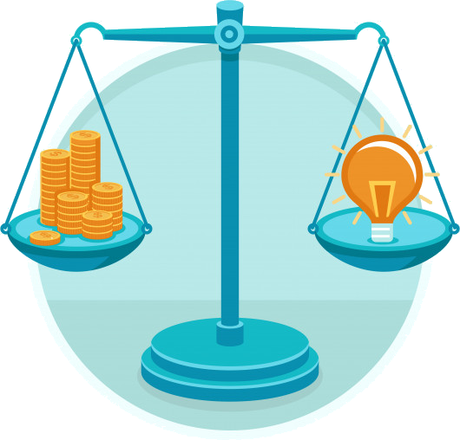Are you tired of being in the dark about your electricity usage? (Pun intended.)
Well, you’re in luck because today we’re going to be talking about all things electrical units of measurement. But before we dive in, let’s define some key terms. A watt is the standard unit of power, which is a measure of how much energy is being used at a given moment.
A Kilowatt (kW) is equal to 1,000 watts. And a Kilowatt Hour (kWh) is a unit of energy, which is equal to using 1,000 watts for a period of one hour.
Now, let’s say you leave a 100-watt light bulb on for 10 hours. That would equal 1,000 watt-hours, or 1 kWh. Got it?
Great!
Now, let’s move on to the bigger boys: the Megawatt (MW) and the Gigawatt (GW). A Megawatt is equal to one million watts, and a Gigawatt is equal to one billion watts. Wow, that’s a lot of watts!
Table of Contents
- How to convert between electrical units of measurement
- Understanding how energy companies charge customers based on usage
- Difference between watts and amps
- Definition of an amp
- How watts and amps are related
- Importance of understanding the difference between watts and amps in electrical work
- How much electricity does an average US home use per day?
- Factors that can influence household energy consumption
How to convert between electrical units of measurement
Okay, so now that we have a basic understanding of the different units of measurement, let’s talk about how to convert between them.
Converting watts to Kilowatts is easy – just divide the number of watts by 1,000.
For example, if you want to convert 5,000 watts to Kilowatts, you would do the following calculation: 5,000 watts / 1,000 = 5 Kilowatts.
Easy peasy!
Converting Kilowatts to Megawatts is a little bit trickier. To do this, you’ll need to divide the number of Kilowatts by 1,000.
For example, if you want to convert 15,000 Kilowatts to Megawatts, you would do the following calculation: 15,000 Kilowatts / 1,000 = 15 Megawatts.
And finally, to convert Megawatts to Gigawatts, you’ll need to divide the number of Megawatts by 1,000.
For example, if you want to convert 20 Megawatts to Gigawatts, you would do the following calculation: 20 Megawatts / 1,000 = 0.02 Gigawatts.
Understanding how energy companies charge customers based on usage
Now that we have a basic understanding of electrical units of measurement, let’s talk about how energy companies use them to charge customers. Most energy companies charge customers based on their Kilowatt Hour usage.
This means that the more energy you use, the more you’ll have to pay. But it’s not just as simple as a straight per-Kilowatt Hour charge. There are other factors that can influence your energy usage and cost, such as the time of day you use energy (some companies charge more for energy used during peak hours), the climate in your area, and the type of energy you’re using.
So, what can you do to reduce your energy usage and save money on your utility bills? Some tips include using energy-efficient appliances, turning off lights and electronics when they’re not in use, and using natural lighting whenever possible. Or find a better rate by comparing energy plans in your area
Enter Zip CodeDifference between watts and amps
You may have heard the terms “watts” and “amps” thrown around when it comes to electricity, but do you know the difference between the two?
An amp, or ampere, is the unit of electric current in the International System of Units (SI). It is used to measure the flow of electricity in a circuit.
Watts, on the other hand, are a unit of power, which is a measure of how much energy is being used at a given moment.
So, how are watts and amps related? Well, watts can be thought of as the “amount” of electricity being used, while amps represent the “flow” of electricity.

Definition of an amp
Now that we know the difference between watts and amps, let’s define exactly what an amp is. An amp, or ampere, is a unit of electric current. It is used to measure the flow of electricity in a circuit. It is named after André-Marie Ampère, a French mathematician and physicist who is considered the father of electrodynamics.
How watts and amps are related
As we mentioned earlier, watts and amps are related when it comes to electricity. Watts are a measure of power, or the amount of energy being used at a given moment, while amps represent the flow of electricity. The relationship between watts and amps can be expressed through the equation:
Watts = Amps x Volts.
This equation, known as Ohm’s Law, shows that the wattage of a device is equal to the current (measured in amps) flowing through the device multiplied by the voltage.
Importance of understanding the difference between watts and amps in electrical work
It’s important to understand the difference between watts and amps in electrical work for a few reasons. First, knowing the difference can help you choose the appropriate size wire for a circuit. For example, if you know that a circuit will be drawing a high amount of power (watts), you’ll need to use a wire with a higher ampacity (ability to carry electric current) to prevent it from overheating. Second, understanding the difference between watts and amps can help you determine the energy usage of your appliances and devices. By knowing how many watts an appliance uses, you can calculate your energy usage and costs.
How much electricity does an average US home use per day?
Now that we’ve covered the basics of electrical units of measurement, let’s talk about how much electricity the average US home uses on a daily basis. There are a few factors that can influence household energy consumption, such as the size of the home, the number of people living in the home, and the appliances and devices being used. On average, a US home uses about 30-kilowatt hours (kWh) of electricity per day. However, this number can vary significantly depending on the factors mentioned above. For example, a larger home with more people and more appliances will likely use more electricity than a smaller home with fewer occupants and fewer devices.
Factors that can influence household energy consumption
As we mentioned earlier, there are a few factors that can influence household energy consumption. These include the size of the home, the number of people living in the home, and the appliances and devices being used. Other factors that can impact energy usage include the type of heating and cooling systems being used, the insulation and energy efficiency of the home, and the local climate.



Enter zip code
View all the electric plans that are available in your area
Compare plans
Not all plans are equal. Use our calculator to find the plan that best fits your needs
Sign up & Save
Enrollment takes about 5 minutes and can save you $50+ on average every month
Enter Zip Code